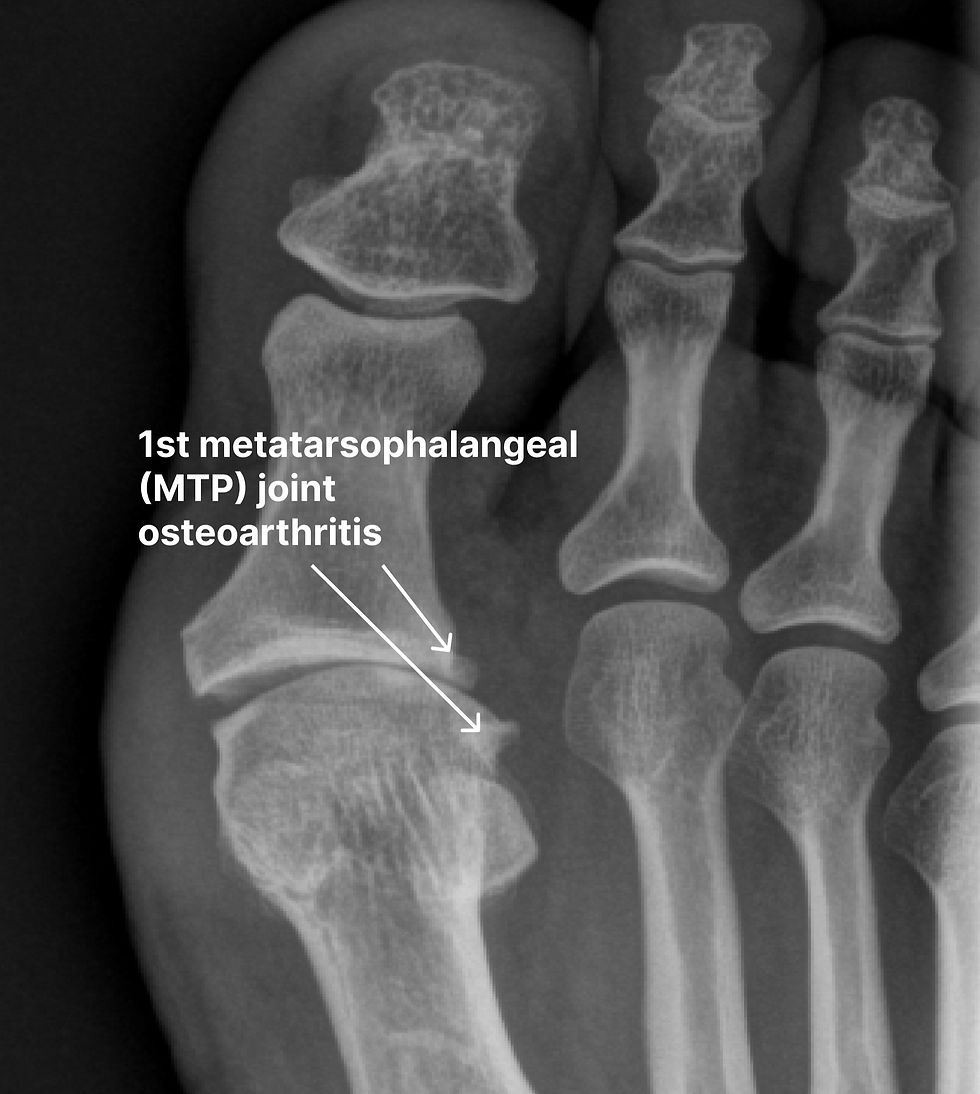The first metatarsophalangeal (MTP) joint plays a crucial role in the biomechanics of walking, so here's a quick post on it's importance. This joint, located at the base of the big toe, allows for proper propulsion and stability during the push-off phase of walking. When the foot lifts off the ground, the MTP joint must be able to extend, allowing the big toe to push off and propel the body forward. If there is limited range of motion or dysfunction in this joint, it can lead to altered gait patterns and compensation mechanisms, potentially causing pain and dysfunction in other areas of the foot, ankle, and even higher up the leg.

Furthermore, the MTP joint is responsible for bearing a significant amount of force during walking. With every step, the MTP joint withstands the pressure of the body's weight and the forces generated during propulsion. Adequate strength and flexibility at this joint are essential for efficient and pain-free walking. Proper care and attention to the first MTP joint can help prevent common foot conditions such as hallux rigidus, turf toe, and sesamoiditis. Strengthening exercises, proper footwear, and addressing any biomechanical issues can all help to maintain the health and function of this important joint.
In conclusion, the first metatarsophalangeal joint is a vital component in the mechanics of walking. Understanding its importance and taking steps to ensure its health and function can help prevent pain and dysfunction, and promote efficient and comfortable walking.
Find Your Stride!
Comments